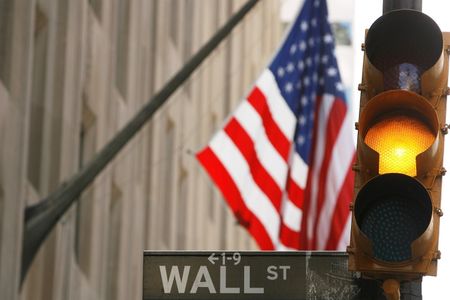US stock futures tread water as nonfarm payrolls approach
2024.07.04 19:42

Investing.com– U.S. stock index futures moved little in holiday-thinned trade on Thursday evening, with focus turning squarely towards key nonfarm payrolls data for more cues on interest rates.
While markets were closed for the Independence day holiday, Wall Street indexes were sitting at record highs hit earlier this week as a swathe of soft economic readings pushed up bets that the Federal Reserve will begin cutting interest rates by September.
But some hawkish signals from the Fed somewhat offset this notion.
steadied at 5,588.50 points, while fell 0.1% to 20,387.25 points by 19:16 ET (13:16 GMT). rose marginally to 39,655.0 points.
Nonfarm payrolls awaited for more rate cues
Wall Street is expected to remain languid ahead of key data due on Friday.
The reading is expected to show some cooling in the jobs market through June, and also comes after a series of weaker-than-expected labor market readings this week.
But the payrolls data has surprised to the upside for seven of the past nine months, amid persistent strength in the labor market. This trend kept investors on guard before Friday’s reading.
A sufficiently cooling labor market is a key consideration for the Fed in bringing down interest rates- a scenario that is yet to play out.
Wall Street perched at record highs amid rate cut hopes
But even with caution before the payrolls data, Wall Street indexes hit record highs on Wednesday amid growing bets that the Fed will cut rates in September.
The rose 0.5% to 5,537.02 points, while the rose 0.9% to 18,188.30 points. The fell 0.1% to 39,308.0 points.
Weak and readings, coupled with a softer , ramped up hopes that the U.S. economy was cooling, giving the Fed enough confidence to begin cutting rates.
The showed traders pricing in a 66.3% chance for a 25 basis point cut in September, down from 68.4% seen a day ago but up from the 59.5% seen last week.
Rate cut bets cooled slightly after the minutes of the Fed’s June meeting showed policymakers still needed more progress in bringing down inflation before they would cut. Some Fed officials were also seen calling for more rate hikes.








